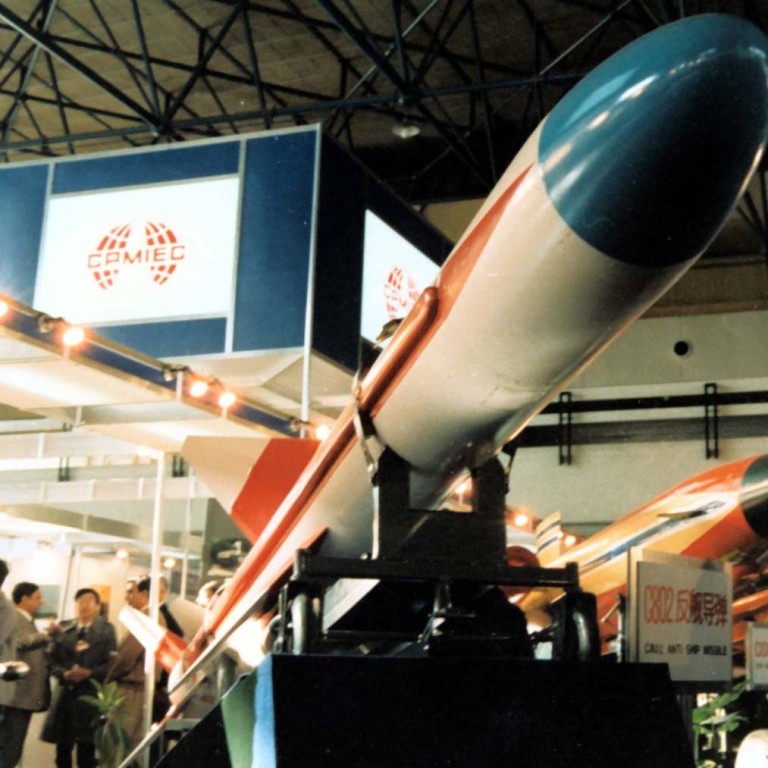
China and Iran: a relationship built on trade, weapons and oil
- Beijing supplied military hardware to Tehran in the Iran-Iraq war and has been among its top three arms suppliers in the past decade
- China remains Iran’s top trade partner, but oil imports slumped after US sanctions
Amid its long-running conflict with the US, Iran has increasingly turned to China for aid to boost its military and to help protect its economy from trade sanctions imposed by Washington.
China remains Iran’s biggest trading partner, but its oil imports from the country have fallen sharply as a result of US sanctions. In November 2019, the last available data, China imported 547,758 tonnes of Iranian oil, down from 3.07 million tonnes in April, according to China’s General Administration of Customs. Trade between China and Iran in 2018 totaled US$35.13 billion, with crude oil accounting for about half, or US$15 billion.
In 2018, US President Donald Trump pulled out of an agreement aimed at curtailing Iran’s nuclear development programme and reimposed crippling sanctions on its economy.
While the sanctions have dented oil trade between the two countries, they remain strong partners on the military front. According to the Stockholm International Peace Research Institute, China was among the top three arms transfer partners for Iran, exporting US$269 million of weapons from 2008 to 2018.
During the eight-year Iran-Iraq war in the 1980s, China was a provider of military hardware to Iran, while the US, the then Soviet Union and other major powers such as France supported Iraq, supplying it with military equipment.
At that time, Chinese military sales to Iran were often conducted indirectly and discreetly through third parties such as North Korea, but they were recognised by Tehran as a critical form of support, according to a 2012 report on China-Iran relations by research organisation the RAND Corporation.
US taking out Iran’s Soleimani could be Trump’s biggest gamble yet
The RAND report also said China had helped the development of Iran’s nuclear programme, although most of this assistance had been, in principle, geared towards civilian uses of nuclear energy.
China not only sold Iran small arms but supplied it with tactical ballistic and anti-ship cruise missiles such as the Silkworm. Chinese design and technology can be seen in many Iranian missile series, from the short-range Oghab and Nazeat missiles to the long-range Shahab.
Beijing’s assistance was seen as vital for Iran to develop its defence capabilities, despite repeated international sanctions: the Islamic republic had an arms embargo imposed in 2007, and three years later the United Nations banned the export of most major conventional weapons to Iran.
China promises ‘relentless efforts’ to save Iran nuclear deal
In 2015, the UN Security Council unanimously passed Resolution 2231, which retained the arms embargo on Iran for five years and sanctions on its ballistic missile programme for eight years.
The resolution was passed on the basis of the Joint Comprehensive Plan of Action, an agreement about Iran’s nuclear programme reached between the five permanent Security Council members – China, France, Russia, Britain and the US – along with Germany and Iran. Trump withdrew the US from the agreement.
A US Defence Department report in November about Iran’s military power said the risk of lifting the arms ban was that Tehran had been evaluating the purchase of more military hardware from Russia and China, including equipment it had largely been unable to acquire for decades, such as advanced fighter aircraft and main battle tanks.
China and Iran signed an agreement in 2016 to bolster defence and military cooperation and fight terrorism. The two nations had held their first joint naval drill in Persian Gulf waters in 2014. In late December last year, four days of naval exercises between China, Iran and Russia, covering 17,000 sq km (6,564 square miles), were held in the Indian Ocean and Gulf of Oman.
As Iran attacks, America forgets: Soleimani was once on its side
Kevjn Lim, a doctoral researcher in political science, government and international affairs at Tel Aviv University, said China had been positioning itself as a stabilising force in the region, including in support of Iran.
“While relatively modest in scope, the trilateral exercise [in December] was still unprecedented and couched in terms of improving security,” he said. “While not a defence alliance, this growing convergence among the three countries should probably not be that surprising given that all three are also targets of American sanctions and oppose its unilateralism.
“That naval exercise was also China’s implicit way of warning against any large-scale US military measure against Iran.”
Additional reporting by Simone McCarthy and Finbarr Bermingham

